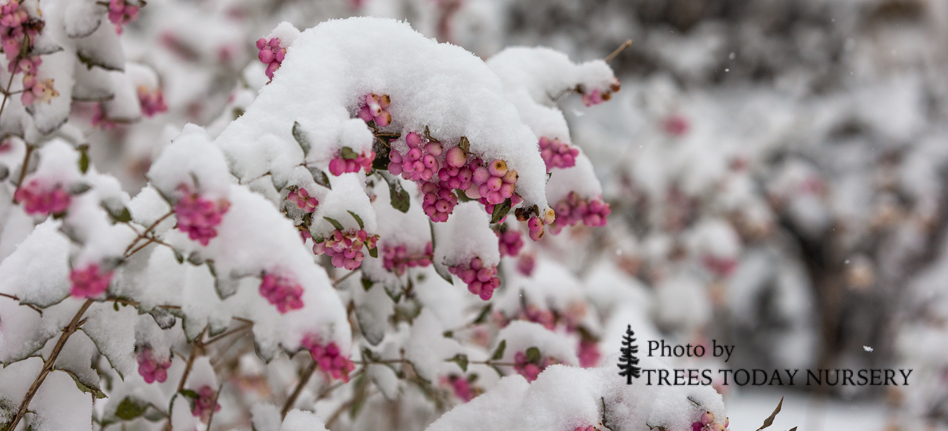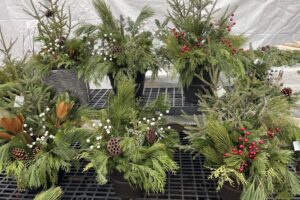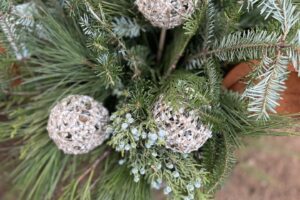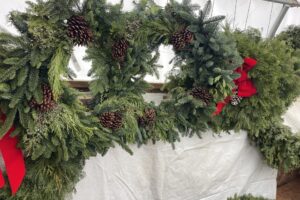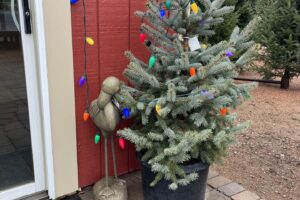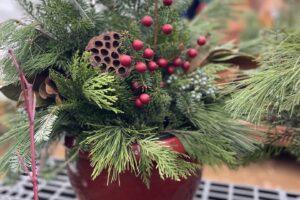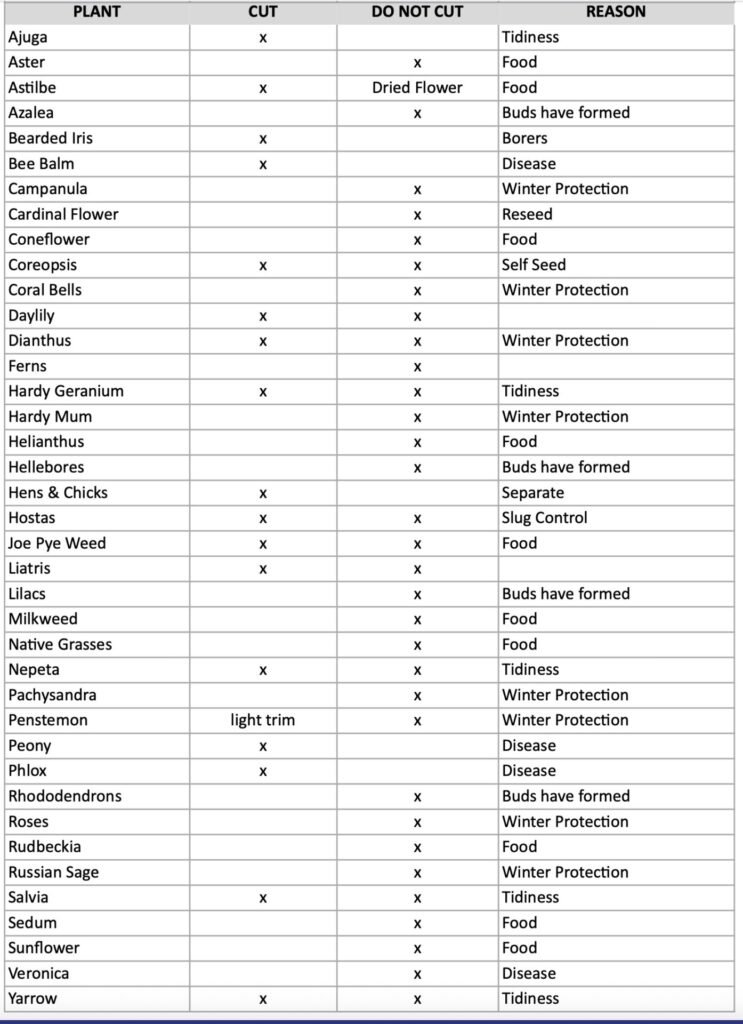Do you think of winter as being dark and dreary? A winter landscaped yard will help brighten up those dreary days. Simply add plants that provide winter interest and color.
The photo below has spruce trees, dogwoods, grasses and a low mound evergreen plant.
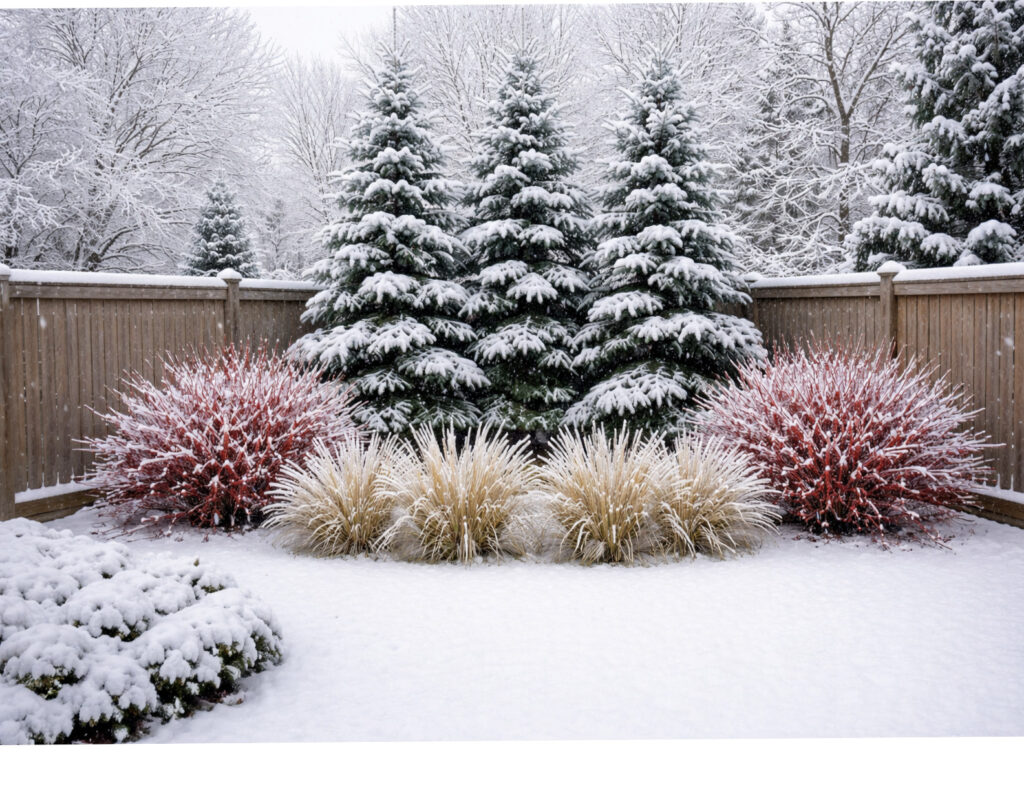
Following are some suggestions for plants that will add some winter interest or color in your yard. If you need help, our staff will gladly help you with your winter landscape.
Winter Interest & Color Plants:
Crab apple trees that hold their berries into winter
Curly willow trees
Birch trees that have peeling bark
Winterberry shrubs
Coralberry shrubs
Japanese barberry shrubs
Dogwood shrubs
Hydrangea shrubs with dried blossoms
Viburnum bushes that hold their berries into winter
Bearberry shrub (low mound)
Rose bushes (rose hips)
Hellebores perennials (bloom late winter)
Karl Foerster grass
Flame Grass
Blue fescue
Bittersweet vine
…….and others



